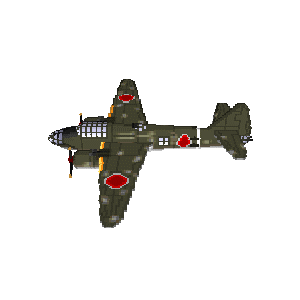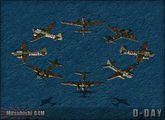Mitsubishi G4M
| ||||||||||||||||
The G4M had very good performance, especially range, which was achieved by its structural lightness and an almost total lack of protection for its crew, with no armor plating or self-sealing fuel tanks. These omissions proved to be its weakness when confronted with American fighter aircraft during the Pacific War.
June 1941 introduction Almost 2,500 were built
The G4M was designed for a long range and high speed at the time of its introduction. Consequently, several weight-saving measures were incorporated into the design, such as dispensing with self-sealing fuel tanks and armor, which caused Allied fighter pilots to give it derisive nicknames such as "the one-shot lighter", "the flying Zippo" and "the flying cigar" because of their tendency to explode or catch on fire from any slight damage to the wing fuel tanks after being hit by aerial machine gun fire or ground-based anti-aircraft fire. Similarly, pilots of the Imperial Japanese Navy despairingly called the G4M the "Type One Lighter", "The Flying Lighter" or even the "Hamaki" ("Cigar"). This was partially due to the fact that on many occasions, the G4M was used for low-altitude torpedo attacks on ships during which their performance advantages were negated.
References

